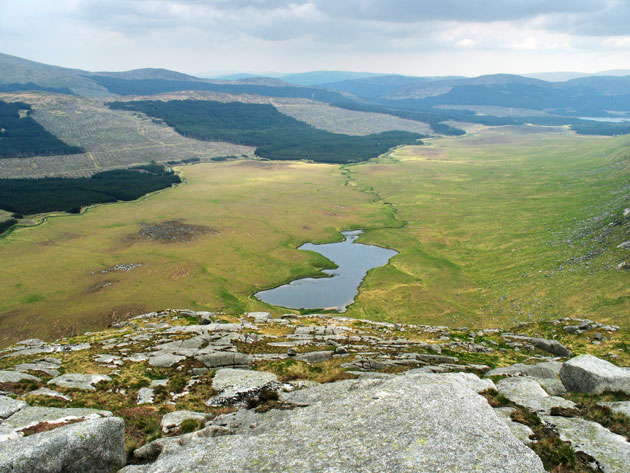Silver Flowe-Merrick Kells on:
[Wikipedia]
[Google]
[Amazon]
 Situated in south-west Scotland, the Silver Flowe-Merrick Kells biosphere reserve is composed of two separate sites.
Silver Flowe is a unique
Situated in south-west Scotland, the Silver Flowe-Merrick Kells biosphere reserve is composed of two separate sites.
Silver Flowe is a unique
 Situated in south-west Scotland, the Silver Flowe-Merrick Kells biosphere reserve is composed of two separate sites.
Silver Flowe is a unique
Situated in south-west Scotland, the Silver Flowe-Merrick Kells biosphere reserve is composed of two separate sites.
Silver Flowe is a unique bog
A bog or bogland is a wetland that accumulates peat as a deposit of dead plant materials often mosses, typically sphagnum moss. It is one of the four main types of wetlands. Other names for bogs include mire, mosses, quagmire, and muskeg; a ...
formation and one of the least interrupted undisturbed mire systems in Europe. Its high value is principally due to the landscape pattern of an assemblage of discrete mires. It is also a breeding site for the rare Azure Hawker dragonfly. Silver Flowe is also designated as Ramsar Ramsar may refer to:
* Places so named:
** Ramsar, Mazandaran, city in Iran
** Ramsar, Rajasthan, village in India
* Eponyms of the Iranian city:
** Ramsar Convention concerning wetlands, signed in Ramsar, Iran
** Ramsar site, wetland listed in a ...
site.
Merrick Kells contains three habitats of European interest: blanket bog, montane acid grasslands, and wet heath with cross-leaved heath. There are mires supporting various communities, and the area has a wide variety of species but low population levels. There are nationally important breeding bird populations, and important invertebrate
Invertebrates are a paraphyletic group of animals that neither possess nor develop a vertebral column (commonly known as a ''backbone'' or ''spine''), derived from the notochord. This is a grouping including all animals apart from the chordate ...
populations. The site is the largest remaining unafforested area of upland in Galloway
Galloway ( ; sco, Gallowa; la, Gallovidia) is a region in southwestern Scotland comprising the historic counties of Wigtownshire and Kirkcudbrightshire. It is administered as part of the council area of Dumfries and Galloway.
A native or i ...
.
Both sites are surrounded by commercial coniferous forestry. The management of Merrick Kells and Silver Flowe is mainly carried out through non-intervention, apart from areas where extensive livestock grazing is practised in order to manage vegetation.
Proposals made in the periodic review for extending this reserve to meet the Seville criteria are being considered.
Major habitats & land cover types
The mire is dominated by ''Trichophoreto-Eriophoretum'' including ''Sphagnum plumulosum
''Sphagnum'' is a genus of approximately 380 accepted species of mosses, commonly known as sphagnum moss, peat moss, also bog moss and quacker moss (although that term is also sometimes used for peat). Accumulations of ''Sphagnum'' can store w ...
'', ''Drosera anglica
''Drosera anglica'', commonly known as the English sundew or great sundew, is a carnivorous flowering plant species belonging to the sundew family Droseraceae. It is a temperate species with a circumboreal range, although it does occur as far s ...
'', ''Pleurozia purpurea
''Pleurozia purpurea'' is a species of thalloid liverwort, notable for its red to purple colour. Common names of the species include purple-worm liverwort and purple spoonwort.
Geographic distribution
''Pleurozia purpurea'' grows in bog enviro ...
'' and '' Campylopus atrovirens''; submontane
Foothills or piedmont are geographically defined as gradual increases in elevation at the base of a mountain range, higher hill range or an upland area. They are a transition zone between plains and low relief hills and the adjacent topograp ...
vegetation including '' Molinietum'' and damp '' Callunetum''; rocks with grassy cover supporting '' Nardus spp.'' and ''Juncus squarrosus
''Juncus squarrosus'', called goose corn, heath rush, and mosquito rush, is a species of flowering plant in the genus ''Juncus
''Juncus'' is a genus of monocotyledonous flowering plants, commonly known as rushes. It is the largest genus in the ...
.''
Sources
References
{{coord, 55.1000, N, 4.5000, W, source:wikidata, display=title Biosphere reserves of Scotland